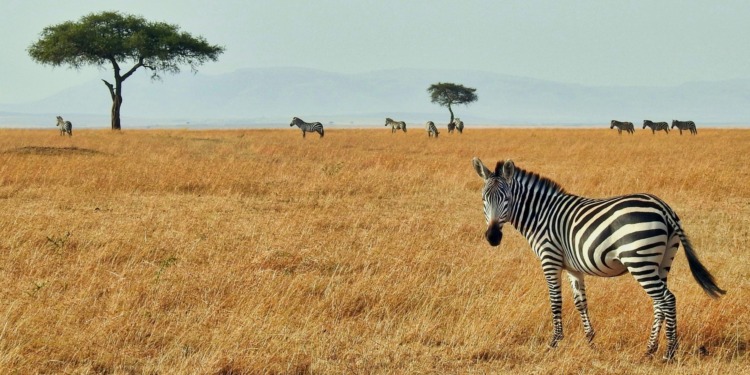The 16th meeting of the Conference of the Parties to the Convention on Biological Diversity (CBD COP16), the first since the adoption of the GBF, aims to push forward the landmark biodiversity plan to halt and reverse nature’s decline.
Amid high expectations for countries to deliver on the GBF commitments, the spotlight is on national biodiversity strategies and action plans (NBSAPs). CBD parties are in the process of updating these critical plans to ensure they effectively reflect the goals and principles of the framework. This alignment is key to driving meaningful action in the fight against biodiversity loss.
Resource mobilization is also set to be a key focus, with the biodiversity funding mechanism and options for monitoring progress at the centre of discussions.
Furthermore, parties are expected to agree on how to operationalize a multilateral mechanism for the fair and equitable sharing of benefits from genetic resources, ensuring the well-being of those who protect them.
IISD will be on the ground, tracking negotiations and delivering daily reports on the key discussions and decisions driving global action on nature.
What are NBSAPs, and why are they important?
What’s ahead for biodiversity funding, and why is subsidy reform critical?
Mobilizing resources for biodiversity and the implementation of the GBF remains critical. A key element of discussions at COP 16 will be the update of the global Strategy for Resource Mobilization—in particular, how the implementation will be financed.
COP 16 will mark a significant milestone on the road to the first deadline for securing international financial resources for biodiversity. According to the framework, international finance must mobilize at least USD 20 billion per year by 2025, contributing to the overall target of USD 200 billion from domestic, international, public, and private finance by 2030.
Meanwhile, there is growing awareness of the need for an integrated approach to resource mobilization, aligning all financial flows with biodiversity targets.
Countries are currently spending significantly more on environmentally harmful subsidies (EHSs) than on positive incentives for biodiversity. While a growing number of global and sectoral studies provide different ranges of EHS estimates, all of them indicate that global EHSs are well over USD 1 trillion per year. The framework aims to correct this imbalance and calls for reducing harmful incentives by at least USD 500 billion per year while scaling up positive incentives for biodiversity. The first step on this journey is for governments to identify EHSs by 2025, prioritizing action on those with the most harmful effects.
Ensuring progress on EHS reform and underscoring its connection to the GBF resource mobilization targets will be essential for closing the biodiversity financing gap.
Related Articles: Over Two-Thirds of Wildlife Lost in Less Than a Lifetime | How Local Governments Can Lead the Biodiversity Movement | The Mass Extinction Crisis: Can the Private Sector Help Solve It? | How Will We Finance the New Deal for Nature? | What Have Cats Got to do With Climate Change? An Interview with Dr. John Goodrich | COP15: The UN Biodiversity Conference Builds Hope for ‘Living in Harmony With Nature’ by 2050
What’s at stake for access and benefit sharing?
At COP16, it is essential to strengthen the implementation of access and benefit sharing (ABS) frameworks for the fair and equitable sharing of benefits from genetic resources. Parties need to address gaps and challenges that have hindered progress, particularly for developing countries and Indigenous communities. This includes enhancing capacity-building efforts, ensuring transparency, and fostering international cooperation to ensure that benefits are shared in a way that supports both the conservation of biodiversity and the well-being of those who safeguard these resources.
In Cali, CBD parties will aim to operationalize the multilateral mechanism for the fair and equitable sharing of benefits from digital sequence information on genetic resources, including a global fund to collect and disburse associated revenues.
Advancing ABS frameworks, as prescribed by the Nagoya Protocol, is of critical importance at COP16. Strengthening ABS frameworks is paramount for the equitable distribution of benefits, addressing biodiversity finance gaps, and supporting developing countries and Indigenous communities.
Why are Indigenous voices critical in COP16 decisions?
The event in Cali is expected to prioritize participation and the inclusion of Indigenous voices in biodiversity and climate discussions. Indigenous Peoples have long been the custodians of some of the world’s most biodiverse regions, relying on their traditional knowledge, customs, and values to manage and sustain their environments. Their practices and deep connection to the land provide unique insights into conservation and climate resilience—insights that are essential for the global community as it strives to address the twin crises of biodiversity loss and climate change. At this COP, it is imperative that Indigenous perspectives are not only acknowledged but actively integrated into negotiations and decision-making in equitable and inclusive ways.
Why is “peace with nature” at the heart of this COP?
There are strong links between environmental change, natural resource extraction, and conflict. The Colombian government is pushing forward a Peace with Nature Coalition and is currently working to get countries to sign up. This is driven by the recognition that many economic and development processes are actively eroding the natural systems upon which we depend. Key to this initiative is the hope that the environmental cooperation and ecosystem restoration central to the GBF can potentially act as a platform for cooperation, trust-building, and peace.
** **
This article was originally published by the International Institute for Sustainable Development (IISD) and is republished here as part of an editorial collaboration with the IISD.
Editor’s Note: The opinions expressed here by the authors are their own, not those of Impakter.com — In the Cover Photo: Zebras in the Masai Mara National Reserve, Kenya, January 6, 2018. Cover Photo Credit: Ron Dauphin.










